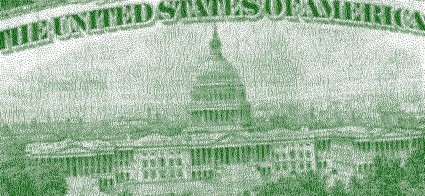by Frank Kirkwood
October 2015
Check Out Your Own Representative’s or Senator’s Political Spending
Your representative in the US House or US Senate may be the biggest campaign spender in your area. Follow the steps below to get a look at the payments they make to help elect other candidates in other districts. We need them to make these payments to only reform candidates.
Typically, incumbents contribute directly to candidates through their Principal Campaign Committee and also through their Leadership Political Action Committee (PAC). They also make payments to parties and other committees that support other candidates.
Finding and adding up all the money that the “Principal Campaign Committee” of your member of Congress sends directly to federal, state, and local candidates and to parties and other committees takes a little digging. Reviewing his or her Leadership PAC is much easier.
First, lets look at the spending by their Principal Campaign Committee
- Go to http://www.fec.gov/disclosurehs/hsnational.do
- Above the map, select the most recent completed election cycle, “2013-2014” for House candidates, it varies for Senate candidates depending on when they last ran. (If you look at the current cycle (2015-2016) you will not see many of the payments we are looking for, as they are typically made very late in the election cycle.)
- When the page reloads, click on your state on map.
- Then click on your Congressional District (or on the map to the right for Senate elections).
- On the new page, click on the candidate’s name.
- On the next page, make sure “2013-14” is still selected.
- Halfway down this page you will see as section called “II. Disbursements”. This is where payments made by the candidate to parties and other candidates will appear. These payments will be listed in one of three sub-categories: “Operating Expenditures”, “Transfers to other Authorized Committees”, and “Other Disbursements”. (There is a lot of variation in how candidates report these payments. You may need to check all three to see all of the payments. It is best to start with “Other Disbursements”.)
- Click on each of these sub-categories to open them (unless the amount is “$0”).
- On the page for each sub-category, the easiest way to find payments to other candidates and to parties is to click on the column heading “Amount” then click the arrows next to “Amount” until the list shows the highest amount at the top. These payments are often near the top of the list.
The “Payee Name” for this sort of payment will be variations on:
DEMOCRATIC (OR REPUBLICAN) NATIONAL COMMITTEE
NATIONAL REPUBLICAN (OR DEMOCRATIC) CONGRESSIONAL COMMITTEE
STATE DEMOCRATIC (OR REPUBLICAN) COMMITTEE
NATIONAL REPUBLICAN (OR DEMOCRATIC) CONGRESSIONAL COMMITTEE
AMERICAN CITIZENS FOR AMERICAN PROSPERITY FOR AMERICA PAC
SMITH FOR CONGRESS
JONES FOR MAYOR, etc.
10. Add up all the payments to the party committees and PACs, to all congressional candidates and to all the other candidates. The total is the amount of money that the candidate spent, using their Principal Campaign Committee, in that cycle, to help elect other candidates in other districts.
To find the amount spent by his or her Leadership PAC
- Go to https://www.opensecrets.org.
- In the upper right corner enter the politician’s last name in the “Search OpenSecrets” box.
- On the next page click on the politicians’s name under the “Member” group at the top of the results.
- On the new page in the center, a bit below the purple box, under “Leadership PAC”, in blue, you will find the name of the politician’s PAC (there could be more than one). Click on the name.
- On the new page, you will see a selection box for “Select a Cycle:”. Select 2014.
- When the page reloads, select the tab “Expenditures” from the tabs listed across the screen just below the PAC name.*
- On the new page you will see (next to “Contributions”) dollar figures for “Contributions to federal candidates”, for “Contributions to state & local candidates”, and “Contributions to committees”.
- Add up all these payments. This is the amount of money that the candidate spent, using their Political Action Committee, in this cycle, to help elect other candidates in other districts.
- Now add together the amount from the Principal Campaign Committee (above) and from the Political Action Committee(s) to get the total amount that this politician is spending to elect other candidates in other districts.
- In most cases, that adds up to an awful lot of money! Let’s use this process to advance reform. To reform our democracy and shift power from the few to the many, we need our representatives be step up and be leaders in reform and to give money to only those candidates who are also reformers.
If your representative is collecting money and passing it on to candidates or groups or parties who oppose reform, then your representative is part of the problem.
*If you want to see which candidates this politician is sending money to, farther down this page, you will see the heading “2014 PAC Contribution Data”, under that is “Contributions from this PAC to federal candidates (list recipients)”. Click on “list recipients” to see all.
